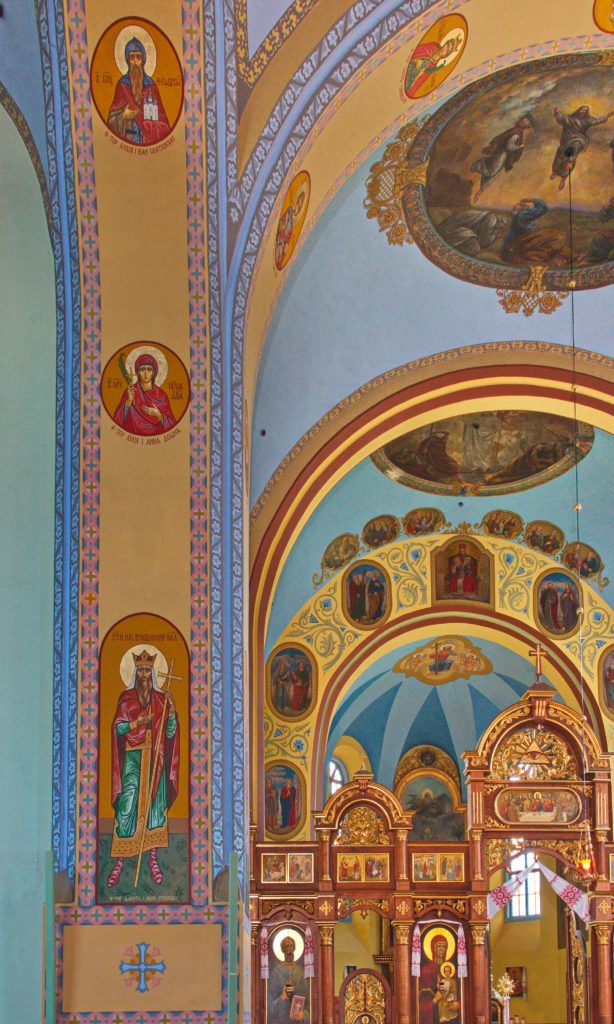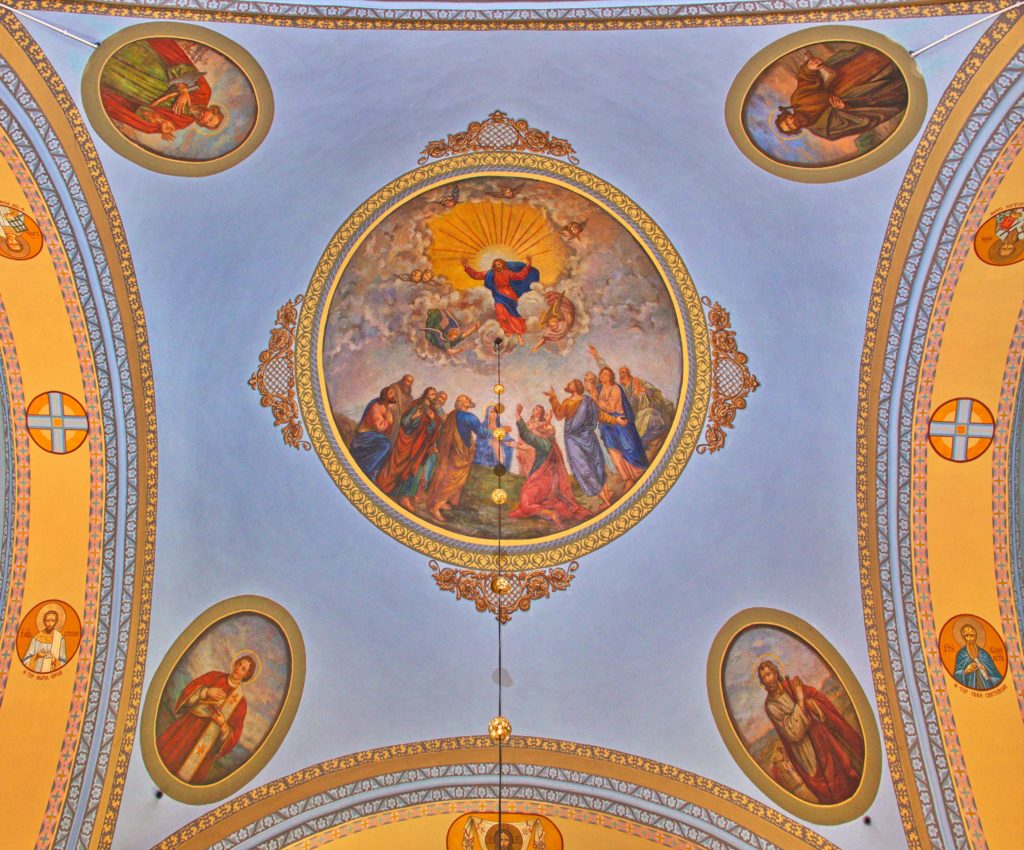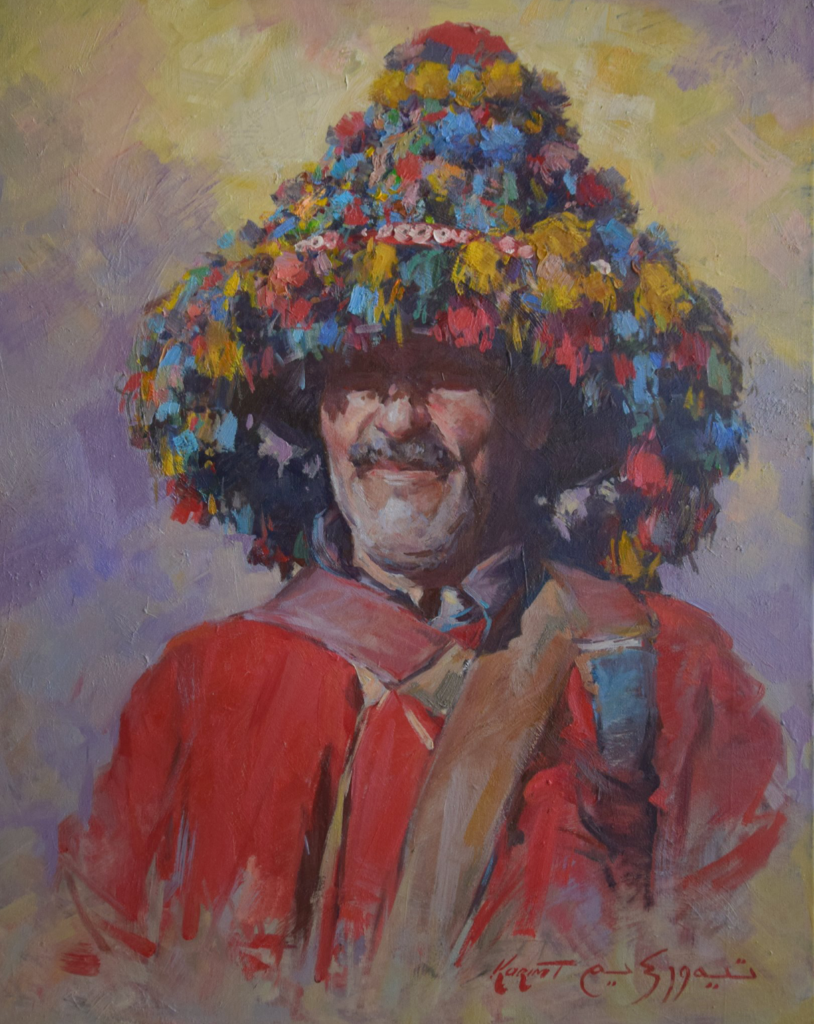Three years ago, Susi Havens-Bezaire was painting in Grand Teton National Park when Timur Karim set up an easel nearby. Over the next few hours they chatted, and by the end of the day Timur invited Susi to paint with him in Poland. She was finally able to do so this summer, and became very impressed with the versatility of Timur’s art.
After growing up in Tajikistan, Timur completed a fine arts degree at the Russian Academy of Arts in Saint Petersburg. In addition to his portrait, studio, and plein air expertise, Timur is a master church muralist, earning much of his living doing restorations and new work throughout Poland, where he has lived for the past 23 years. Timur’s work is presented at Gallery 89 in Steamboat Springs, four galleries in Poland, and two more in Slovakia.

Polish Artist Timur Karim: Painting church murals to support a passion for painting portraits
by Susi Havens-Bezaire
Susi Havens-Bezaire: It’s quite an honor to be selected to paint the magnificent Sanctuary of Divine Mercy in Lagiewniki, Krakow, which was commissioned by Pope John Paul II and is visited by people from all over the world. How did you get invited to do the project? Can you tell us how you developed the design for the murals?
Timur Karim: I was surprised when I was asked to do the project. Until that time I had two mural installations in less important places. I was asked to make four drafts, each with a different theme. My friend Jarosław Giemza, a leading specialist in sacred topics and an art critic, agreed to be my consultant. It was not easy. I spent a lot of time in the library and consulting with my adviser. I wanted to create original work, but it is very important to observe canon law when creating sacred art. I was not strong in these topics because I was born in the atheistic country of the USSR and in addition, I am Muslim. The walls in the chapel were not uniform or symmetrical. It took two months to submit my design proposals. Imagine my surprise when I got the call saying I got the job!

SHB: How long did it take to complete the work in the Byzantine chapel?
TK: The work took about one and a half years and was very interesting. I met so many people — groups of pilgrims came from Latin America, North America, Europe, and Great Britain while I worked. An artist doing such a big job will, at some point, find he no longer sees mistakes he is making. This is a signal that one needs to rest for a few days. Painting a mural is not like a canvas painting that can be put in a corner and returned to later — in public places it is not always possible to take needed breaks. I was lucky that I was allowed to take breaks while working on this chapel. I would leave Krakow for plein air painting, sometimes in other countries. I also visited churches and museums to view the religious murals and paintings of old masters.

SHB: In the last 20 years, you have also totally renovated the Greek Orthodox Catholic Church of Saints Peter and Paul in southern Poland. That is a huge undertaking! How did you begin the project?
(Note: Click here to see a 360 view of Timur’s Renovation.)
TK: The Church of Peter and Paul, in Krynica, is my very first such work in Poland. As a student, I worked part-time at restoration companies. After graduating from the Academy of Arts, I moved to Poland. Father Jan Pipka asked me to come to his church and see what could be done about the old murals. I was scared. Firstly, it’s a very large church; secondly, was the very poor state of the walls and murals. I wanted to refuse, but the priest, who had kind eyes and a positive energy, said, “If you do this, it will be your business card in the future. I believe in you.” I thought about it and agreed.
Such work is not cheap, and no one will give you such a job just because you are a good and cheerful guy. I am very grateful to Father Jan for believing in me, and I was eager for the experience. The work was hard, especially because I was inexperienced in doing such a big restoration. Since there is no heating in the church, I could only work in the summer when the walls are warm enough for the paint to stick and dry.
SHB: What were the steps needed to complete the work?
TK: All the plaster had to be torn off the walls. Previously, the church had a wonderful mural in the choir loft, but in the 1970s, while still under the influence of the USSR, a “master” erased the entire artwork and created a new one that was not successful. At that time, no one in the state monitored the quality of work, what kind of paint materials artists used, etc. Walls were torn down to the brick, new plaster applied, new colors and décor painted. Along the ceiling, other old murals had survived but needed restoring. Once that was done, I began the second stage — creating my own murals flowing from the older ones on the ceiling.
SHB: As we stood together in the church, you shared the details of the saints you had painted. How did you, a Muslim, gain such deep knowledge of the Catholic faith?
TK: Of course, I was always consulting with my friend Jarosław Giemza. For example, I felt that on one wall I needed a multi-figure composition; on the other, several separate figures; on the third wall a figure waist high. Jarosław advised me what scenes go with which figures; then I created my compositions and painted them on the walls. I think it was also important that I have a good reputation as a person.
SHB: Have you done other mural work?
TK: I still work in the Krynica church in southern Poland, but not so often and not so long — maybe two weeks in a year. The church is large; there are a lot of empty walls, so there is still enough work for several years. Sometimes I receive orders from private people or companies, mainly restaurants, hotels, or private houses, but the most interesting projects are in churches.
SHB: Did you have any people who assisted you in painting the church?
TK: At the first stage, when there was a lot of difficult construction work, I hired about eight to ten people, who were not artists but builders. During the second stage, I worked alone.

SHB: How do the extensive mural projects impact your other art?
TK: The mural work allows me to do what I love, which is painting from life. I am a free artist who paints landscapes, still lifes, and portraits. I do exhibitions and attend plein air events and symposiums. I travel around the world, and each creative trip enriches me. I especially like to paint portraits in exotic countries such as Morocco, Tunisia, Mongolia, and Jordan because I am inspired by the faces of the people living there. When I draw portraits, I get a glimpse of their world.
See additional images of the church murals here.
Sign up to receive Fine Art Today, the free weekly e-newsletter from
Fine Art Connoisseur magazine.








